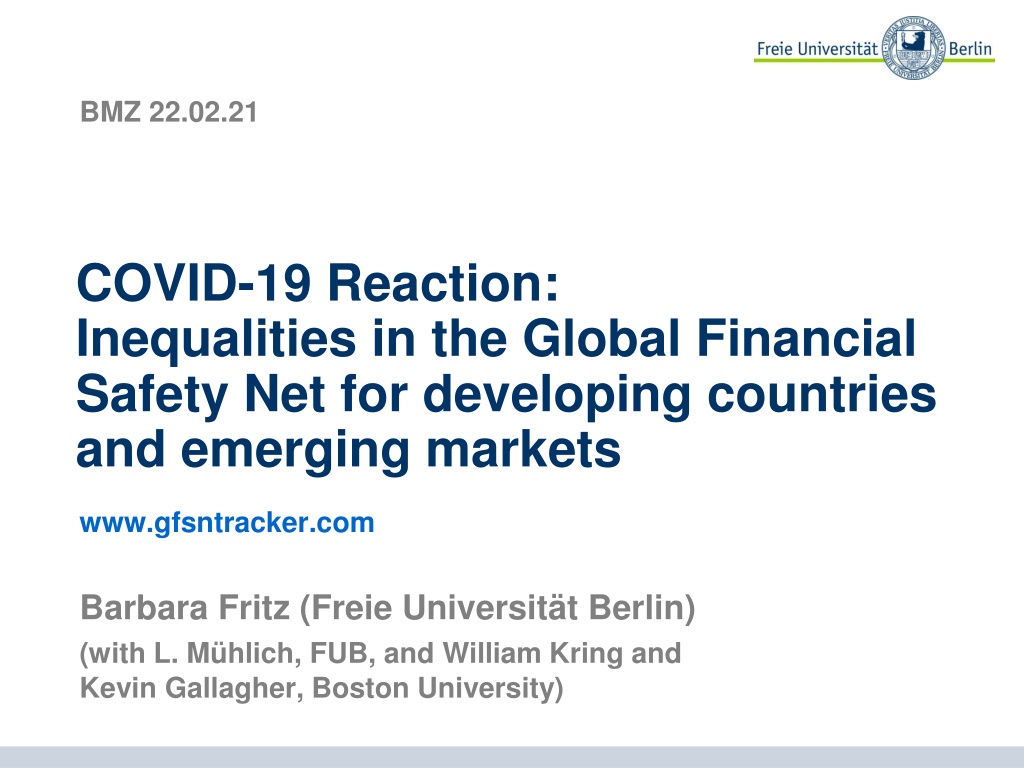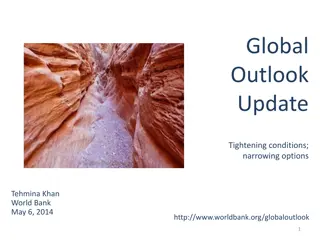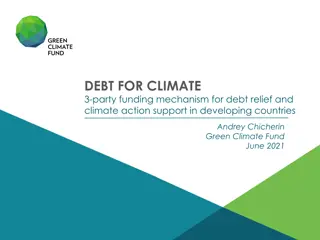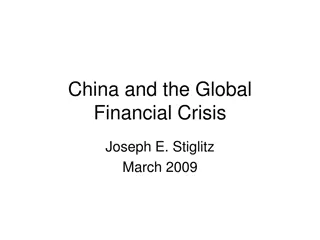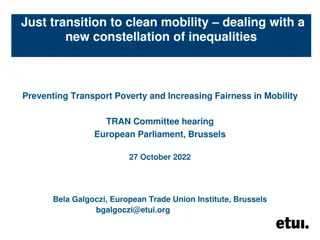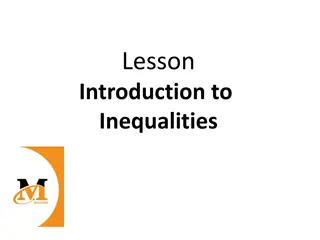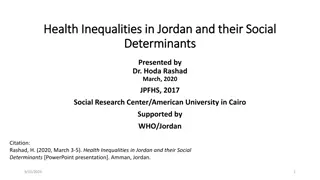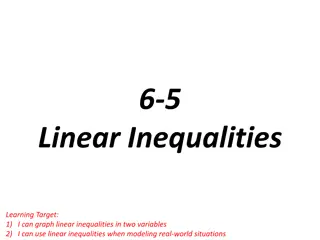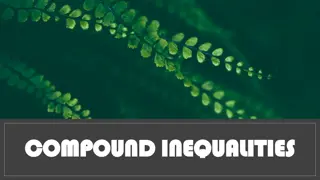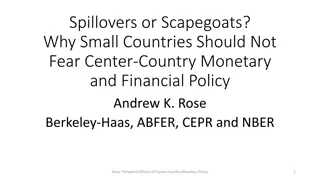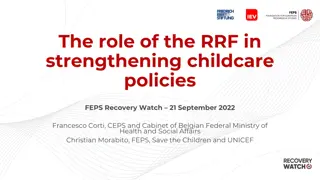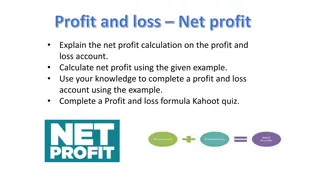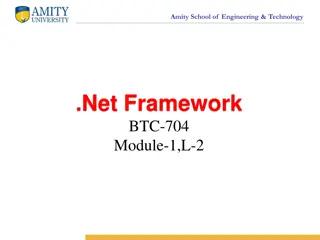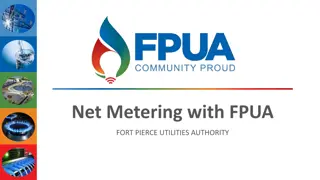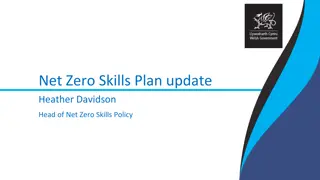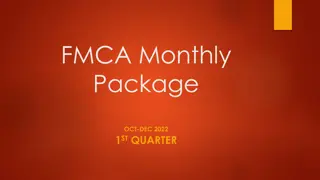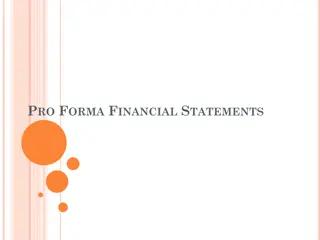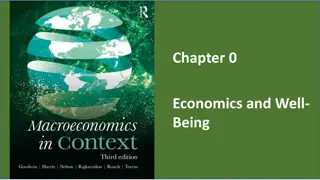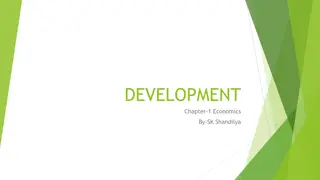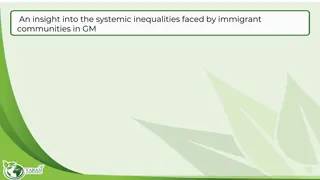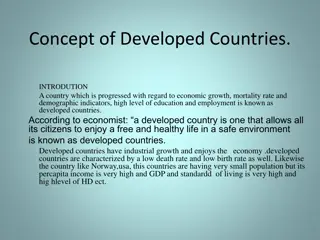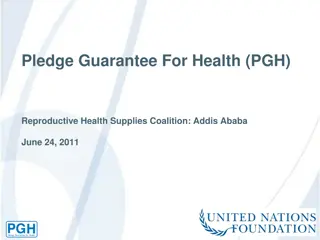Global Financial Safety Net Inequalities for Developing Countries
The article discusses the inequalities in the global financial safety net for developing countries and emerging markets, focusing on the challenges faced by countries with unsustainable debt. It explores initiatives like the Debt Service Suspension Initiative and the G20 Common Framework to address liquidity and insolvency problems. The analysis also covers fiscal policies and lending capacity in different regions, emphasizing the need for more equitable support mechanisms.
Download Presentation

Please find below an Image/Link to download the presentation.
The content on the website is provided AS IS for your information and personal use only. It may not be sold, licensed, or shared on other websites without obtaining consent from the author. Download presentation by click this link. If you encounter any issues during the download, it is possible that the publisher has removed the file from their server.
E N D
Presentation Transcript
BMZ 22.02.21 COVID-19 Reaction: Inequalities in the Global Financial Safety Net for developing countries and emerging markets www.gfsntracker.com Barbara Fritz (Freie Universit t Berlin) (with L. M hlich, FUB, and William Kring and Kevin Gallagher, Boston University)
CURRENT SITUATION IN COVID-19 2
Two groups of countries Countries with sustainable debt: Liquidity problems Countries with unsustainable debt: Insolvency problems GLOBAL FINANCIAL SAFETY NET Reestablish ability to react, health, social protection, business and labor DSSI Debt Service Suspension Initiative G20; Common Framework Reestablish debt sustainability and ability to react 3
Fiscal policy for income groups (Number of countries) Quelle: IMF Fiscal Monitor Update January 2021 5
GLOBAL FINANCIAL SAFETY NET 6
Global Financial Safety Net (since 1944 in US$): IMF Source: M hlich et al. 2020 7
Global Financial Safety Net: IMF & Regional Financial Arrangements (RFAs) Source: M hlich et al. 2020 8
Global Financial Safety Net: IMF & RFAs IWF & RFAs & currency swaps Source: M hlich et al. 2020 9
INEQUALITY IN THE GLOBAL FINANCIAL SAFETY NET 10
Lending Capacity for Regions (2018; for 1 year; in % of GDP) East Asia & Pacific Europe & Central Asia Sub-Saharan Africa Latin America & Caribbean Middle East & North Africa South Asia North America 0 1 2 3 4 5 6 7 8 9 IMF conditional IMF unconditional Central Bank Currency Swap RFA 11
Lending Capacity for Regions (2018; for 1 year; in % of GDP) East Asia & Pacific Europe & Central Asia Sub-Saharan Africa Latin America & Caribbean Middle East & North Africa South Asia North America 0 1 2 3 4 5 6 7 8 9 IMF conditional IMF unconditional Central Bank Currency Swap RFA 12
Lending Capacity for Income Groups (2018; for 1 year; in % of GDP) High income Upper middle income Lower middle income Low income 0 2 4 6 8 10 12 IMF conditional IMF unconditional Swap RFA 13
Lending Capacity for Income Groups (2018; for 1 year; in % of GDP) High income Upper middle income Lower middle income Low income 0 2 4 6 8 10 12 IMF conditional IMF unconditional Swap RFA 14
Lending in COVID-19 Crisis (Feb. 20 Jan. 21, % of GDP, for regions) Latin America & Caribbean South Asia East Asia & Pacific Europe & Central Asia Middle East & North Africa Sub-Saharan Africa North America 0 1 2 3 4 5 6 7 IMF conditional IMF unconditional Swaps RFA www.gfsntracker.com 19
Lending in COVID-19 Crisis (Feb. 20 Jan. 21, % of GDP, for regions) Latin America & Caribbean South Asia East Asia & Pacific Europe & Central Asia Middle East & North Africa Sub-Saharan Africa North America 0 1 2 3 4 5 6 7 IMF conditional IMF unconditional Swaps RFA IMF: 105 bi. USD of 1 tri. USD RFA: 5,5 bi. USD of 1 tri. USD 2018 www.gfsntracker.com 20
Lending in COVID-19 Crisis (Feb. 20 Jan. 21, % of GDP, for income groups) High income Upper middle income Lower middle income Low income 0 0.5 1 1.5 2 2.5 3 3.5 4 IMF conditional IMF unconditional Swap RFA www.gfsntracker.com 21
Lending in COVID-19 Crisis (Feb. 20 Jan. 21, % of GDP, for income groups) High income Upper middle income Lower middle income Low income 0 0.5 1 1.5 2 2.5 3 3.5 4 IMF conditional IMF unconditional Swap RFA www.gfsntracker.com 22
TO CONCLUDE 23
Schlussfolgerungen Disposal of short term liquidity important for sustainable COVID-19 support of solven emerging markets and developing countries to reach SDG goals COVID-19 reactions shows: multilateral institutions IMF, RFAs) in little use until now: calm before the storm? New arquitecture of GFSN: emerging liquidity diplomacy of bilateral swaps Maintain GFSN as multilateral regime: (1) Coordination: cooperation in between IMF and RFAs (2) Further reform of IMF: increase and redistribute special drawing rights, reform conditionality 24
Politische Schlussfolgerungen GFSN als multilateralen Rahmen erhalten: (1) Koordinierung: partnerschaftliche Abstimmung Kreditvergabe IWF und RFAs (2) Weitergehende Reform des IWF: Anheben der SZR, Umverteilen der SZR, Auflagen reformieren Multilaterale Entwicklungsbanken Teil des GFSN: in systemischen Krisen Liquidit ts- und Strukturhilfe nicht trennbar Bereitstellung von Liquidit t mit Anforderungen an nachhaltige (soziale und kologische) Transformation verbinden f r alle GFSN Elemente 25
VIELEN DANK FR IHRE AUFMERKSAMKEIT 26
